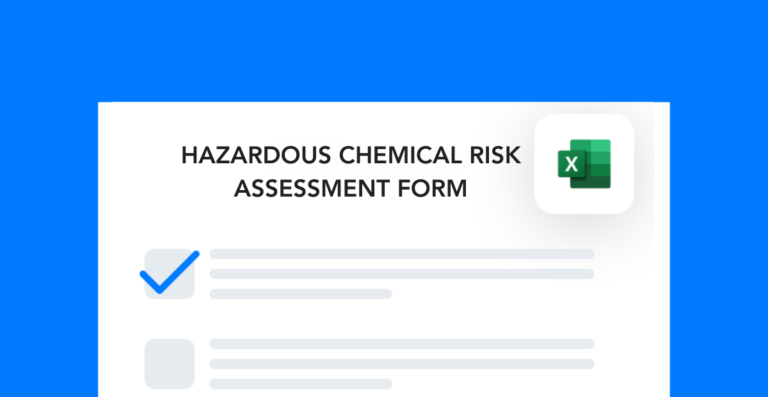Chemical safety assessment is critical in preventing workplace hazards—between 2011 and 2016, 229 fatal work injuries were caused by chemicals or chemical products. Therefore, thorough assessments protect workers in both confined spaces and open environments by systematically auditing conditions and effectively mitigating risks.
Start by conducting a chemical safety assessment to prevent these hazards. This analysis confirms that effective chemical control measures are in place and functioning properly.
Free form!
Use this Excel template to complete a thorough hazardous chemical risk assessment.
How does the EPA regulate toxic chemicals?
Many laws regulate how businesses use and dispose of chemicals. While not the first federal regulation on commercial chemical use, the Toxic Substances Control Act (TSCA) remains a major driver of modern compliance standards in the United States.
Congress passed this law in 1976 with three main goals:
- Properly assess brand new chemicals before they reach consumers
- Control existing chemicals that posed health risks to the public
- Regulate how individuals and businesses could distribute and use these chemicals
Today, the Environmental Protection Agency (EPA) enforces standards within this law using a four-part chemical safety assessment process.
What is a chemical safety assessment?
A chemical safety assessment involves conducting a risk analysis specifically focused on chemicals. As a result, it plays a crucial role in documenting safety measures for all commercial goods. Therefore, whether you’re an importer, manufacturer, or distributor, you must complete an assessment of the chemicals used in your products.
These assessments identify toxic substances in a product and establish control measures to prevent consumer harm. Consequently, a thorough analysis evaluates the risks that products pose at every stage of the supply chain.
For example, if you manufacture baby products, you must assess potential risks during production, transit, and customer use. Each stage of handling may introduce new hazards—ones that might not exist within the manufacturing environment.
As you identify each risk in your assessment, outline the control measures you plan to implement. By doing so, you create a risk management program that you must consistently enforce over time.
What does a chemical safety assessment include?
A chemical safety assessment can be broken down into three main stages: identification, characterization, and assessment.
IDENTIFICATION: Decide which chemicals and substances need to be included in your analysis.
CHARACTERIZATION: Determine if the chemical is regulated, hazardous, prohibited, etc.
ASSESSMENT: Analyze each chemical to determine if it is above the regulated amount or if it contains any potentially harmful, unregulated substances.
Before you begin your assessment, gather the following information:
- A safety data sheet from your suppliers
- List of all chemicals used in your production processes
- List of all substances used in your production processes
- Local regulations regarding chemical hazard (especially disposal requirements)
Once you’ve completed your assessment, here are a few things you can do:
- Compile your findings into a chemical safety report.
- Create updated safety data sheets for your products.
- Log action items to implement control measures.
- Update your employee training program to include any changes to the process.
If you believe that your site needs to complete this type of assessment, you can read more about the EPA’s chemical safety procedures here. It includes a more in-depth discussion of the steps outlined in this brief overview.




